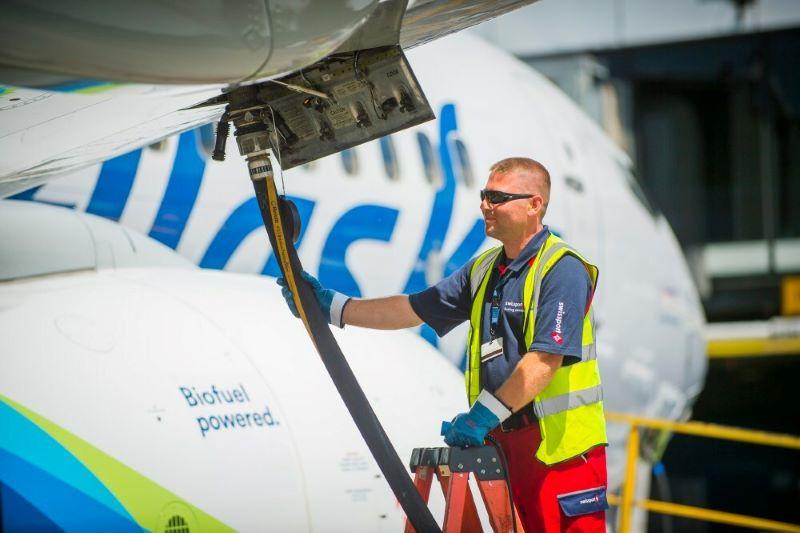
A new partnership announced by Alaska Airlines is aimed at addressing challenges to scaling sustainable aviation fuel (SAF) production and supply.
The airline says its collaboration with Shell Aviation, an arm of international oil and gas company Shell, will likely include infrastructure investments, public policy changes, and engaging other partners. Six key challenges to scaling SAF are listed in the carrier’s 2021 sustainability report, including a need for commercial-scale feedstock quantities; efficient storage and transportation; and retrofitting or constructing new production facilities close to feedstocks.
“Between our airline and Shell, as one of the largest fuel producers in the world, we have a unique opportunity to develop a deeper shared understanding of these issues,” an Alaska spokesperson told Aviation Week. “One example is infrastructure: what would it look like to develop the refining and production capacity to grow supply of SAF in a way that is feasible cost-wise, and what pipeline or other transportation issues do we need to address to ensure steady supply of SAF in key markets like the Pacific Northwest.”
The partnership agreement includes a focus on alleviating fueling infrastructure challenges in the Pacific Northwest, and a commitment from Shell Aviation to supply up to 10 million gal. of neat SAF to Alaska’s Los Angeles hub.
In August, Alaska signed a purchase agreement with biofuel company Gevo for 185 million gal. of SAF over the five-year period 2026-2031. The Colorado-based biofuels company will produce SAF using residual starch from inedible field corn, in a production process powered by renewable energy. It most recently signed an agreement with Hawaiian Airlines for the purchase of 50 million gal. of SAF over five years, with deliveries slated to begin to the carrier’s gateway cities in California beginning in 2029.
“The reality is that while SAF represents a significant opportunity and critical ingredient to airlines achieving a long-term goal of net zero, SAF is only available today at volumes closer to 1% of total fuels, and at 2-6 times the cost of traditional fuels,” Alaska’s spokesperson added. “More work is needed to understand exactly how we can scale up production and supply, and how to do so at a cost that is more viable than it is today.”
Alaska aims to reach net zero carbon emissions by 2040.
